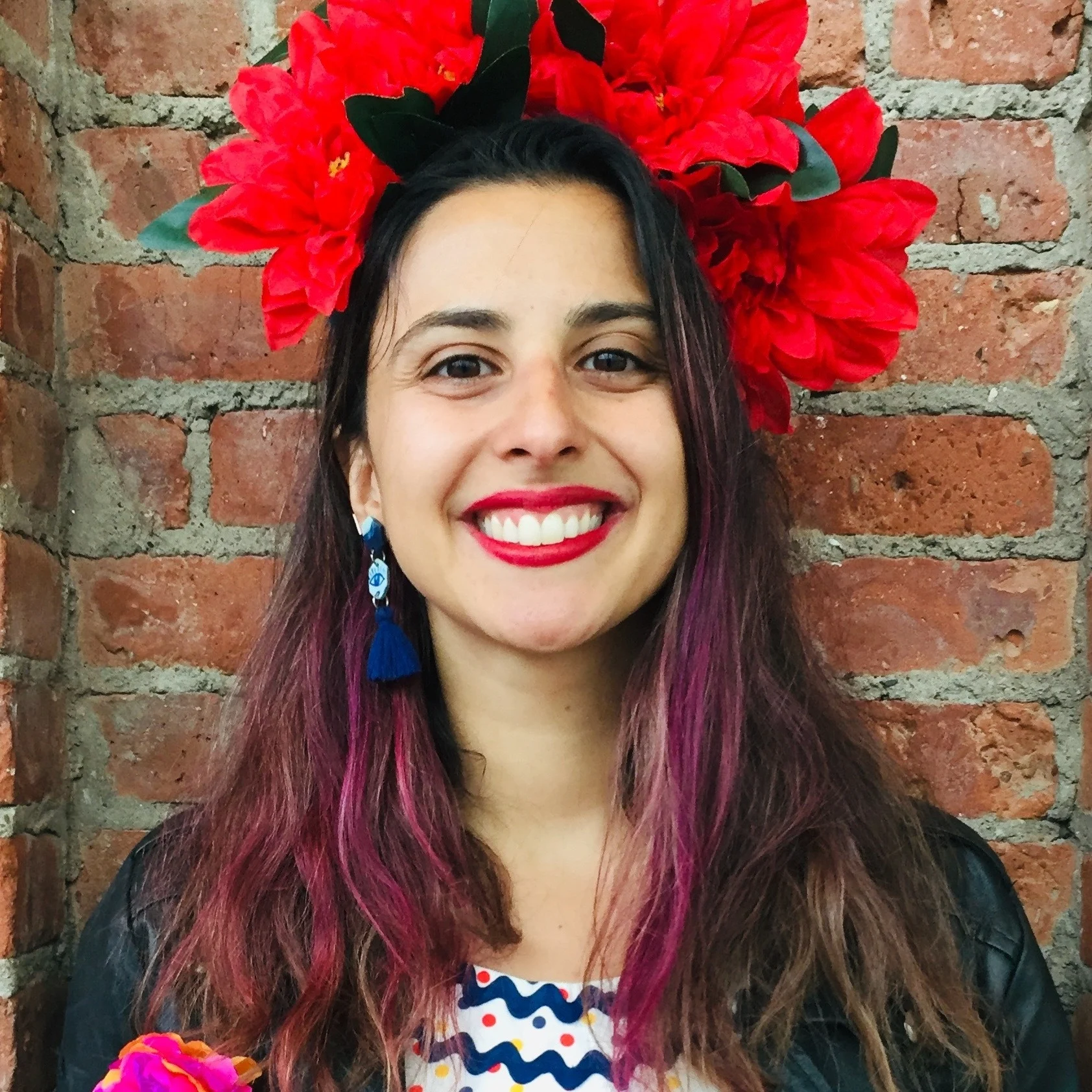Stay in the know
All our latest podcasts delivered right to your inbox.
Gil Gershoni is the founder and creative director of the branding firm Gershoni Creative. He says that everything he does, he does dyslexic.
Gil sees dyslexia as a hyper-ability. His goal is to show the world that dyslexic thinkers can open new doors and innovate anything.
Along with Gershoni Creative, Gil created Dyslexic Design Thinking, a method that helps clients see new perspectives and tell the story of their brand. Gil also hosts Dyslexic Design Thinking, a podcast that explores the link between dyslexia and creativity. Through these outlets, Gil spotlights dyslexic thinkers and ideas.
Listen to this week’s episode of How’d You Get THAT Job?! to learn more about Gil’s approach to changing the dyslexia disability narrative, and how he advocates for neurodiverse teams.
Related resources
“Out of the darkness and into dyslexia” — a for/by article by Gil Gershoni
Episode transcript
Gil: So, when somebody asks me about my dyslexia, I'm dyslexic through and through. I wake up dyslexic, I eat dyslexic, I dance dyslexic, I do everything dyslexic, because that's the way my mind works.
Eleni: From the Understood Podcast Network, this is "How'd You Get THAT Job?!," a podcast that explores the unique and often unexpected career paths of people with learning and thinking differences. My name is Eleni Matheou and I'm a user researcher here at Understood. That means I spend a lot of time thinking about how we find jobs we love that reflect how we learn and who we are. I'll be your host.
My next guest, Gil Gershoni, identifies as dyslexic, an artist, an entrepreneur, a father, a husband, and a pretty good table tennis player. Being dyslexic is in everything he does because it's how his mind works. He sleeps, eats, and breathes dyslexic. Gil is the founder and creative director of the branding firm Gershoni Creative.
He's also the founder of Dyslexic Design Thinking, a methodology he uses to work with clients to see things from new perspectives. Dyslexic Design Thinking has led to a number of initiatives that are changing the narrative of dyslexia as a disability to a hyper-ability. He also advocates for more inclusive and neurodiverse teams in organizations. He credits his creativity, visual and emotional intelligence out-of-the-box nonlinear thinking, and unique ways of solving problems to being dyslexic. Welcome to the show, Gil.
Gil: Thank you so much. It's lovely to be here.
Eleni: So, you're the founder and creative director of a successful branding firm, Gershoni Creative. You also have a podcast called Dyslexic Design Thinking, where you talk about a lot of the topics that I think we'll cover today. Talk to me about how you think your dyslexia contributed to your success.
Gil: Well, maybe the good place to start is to sort of reframe what I see dyslexia as versus what the dictionary or the common sort of misunderstood meaning of it is. Most folks that you ask, "Oh, you have dyslexia. Oh, you do the letter, you flip them, you have the hard time reading." And that's true.
First thing to know is that dyslexics come in all different forms. Dyslexia is a big umbrella for different types of minds and different types of ways of processing the world around them. The symptoms of not being able to read easily or write easily really has to do with the idea that I negotiate everything. My mind looks at letters as negotiable symbols, and most people that read easily, they don't negotiate the letters. To them, they're fixed symbols that they refer to as just, you know, a string of codes and cues and things, and then they can read the word.
But for me, when I look at letters, I tend to sort of negotiate them. I tend to look underneath, below, above, and I do it all at the same time. But you take the same symptoms of learning differences, and you apply it as a strength. And all of a sudden, I can visualize like nobody's business, I problem solves and come up with solutions that are not obvious to the regular or to the traditional mindset. And I can connect people and things from different places with the blink of an eye, I think immensely fast.
A lot of dyslexics find their path of entrepreneurship because they can then, you know, create their own story, look at organizations' problem and in industries in a whole new way. And I think a lot of dyslexic and I think I have it similarly, I have a tremendous amount of empathy because I can relate to folks and I'm trying to listen not only to the words but to where they come from, their whole body, what's their intention. So, those are some of the things that the gift of dyslexia and the strength of it has been a huge part of my success and the way that I look at the world around me. You know.
Eleni: I know that you really put yourself out there to get your first job. Do you want to tell that story and how, you know, what that taught you about your dyslexia and the kind of person that you are?
Gil: I always, you know, when I first set a paper route, I figured that because I was very young and they only give me X amount of routes that I can't really, there's not a lot of room for growing that got that route. So, I said, "OK, what if I get my cousins and my brother to extend the route and then they'll work underneath, you know, under me?" And we were able to sort of grow our paper route to a much larger neighborhood. We did it for all sorts of different things. I went to all the summer camps in my community, and I must have been nine years old and says, you know, "I want to perform for the kids."
And the camp director says, "You are one of the kids. What are you going to perform?" He says "No, no, no." And I had a little dove, a little, you know, in my bag. And I showed him I had a pigeon, and I did a little bit of a trick and he was like, "OK." So, he said, "Yeah, let's try one show." And I was like, "No. Either I did the whole summer camp for all the sessions, or I don't do it at all." And he was like, "I'm sure I don't know this person today, but I'm sure that he was just like, 'You got to be kidding me, man.'"
This is a 9-year-old with a pigeon and a bike trying to close, you know, the whole summer season. And he gave me the show, you know, and I got my brother and my niece to participate. And we would do a 35 to 45 minutes performances twice a day at the summer camp, and we earned some decent money for it. So, I always kind of like to think about those things, you know, and take the leap.
When it came to doing some branding work, I remember I was at university and I was at an administrative office and the phone rang and the person, you know, says, "Oh," and she put the person that rang on hold and said, "They're looking for somebody to design the Miami Grand Prix Auto Race. Do we know anyone?" And I says, I was just there, and I was like, "Oh, that's what I do. Can I pick up the phone?" And he was like, "Sure." So, I got up the phone and I talked to the guy and I was like, "Absolutely what it is you guys are looking for?" He says, "Well, we're going to need some merchandising. We need to do some brand the city of Miami with Toyota and the branding and all these things." And I says, "Absolutely. Let's meet and put this together."
I must have worked for that gentleman for about five or six years. And through the process, I you know, I brought one of my dear friend that was an illustrator to join, another friend that was a writer, and I just created this sort of small little team. And we're just we're taking these projects on, and we would always go and meet with this guy and or the team at the time, to figure out what they needed and then sort of faked it until we made it, and we made it very quickly because we had to figure out how to deliver these things.
And yeah, I think that's something that I've heard from a lot of dyslexics that we sort of marched on drum beat. We found our own paths, you know, and if I went to a proper interview and had to write something to do it, I probably would never get the job. But the fact that it just sort of I was open to it, I was at the right place at the right time, and I just kind of took the leap, you know, kind of changed the outcome. And it happens every time. I mean, everything we do it sort of starts somewhere around that place.
Eleni: Yeah, I, I love that phrase "take the leap." You know, you have mentioned entrepreneurship a couple of times and obviously, you are an entrepreneur yourself, and I noticed that you had also written an article about, you know, what makes dyslexics such good, successful entrepreneurs. I would love for you to talk about like how that's relevant to your career and your success. And if you can apply some of those, you know, principles to yourself.
Gil: Yeah, I love that you sort of grabbed the idea of the leap, because that's what we do with language, right? We leap over letters, we leap over ideas. You know, often, you know, it's harder for me to be linear. You have to really focus on trying to stay linear. But leaping is something that comes naturally to me.
And, you know, so as an entrepreneur, I tend to sort of leap, you know, I tend to leap through ideas, I tend to leap toward direction, adapt to see the world around and connect things that maybe are not apparent to the eye. I am meticulous, you know, because I can see the details I describe before I can see the details between how this particular screw in my watch can change the manufacturing, can benefit the economics, and help us actually deliver something that weighs less so we can start a less expensive product and manage our margins, right? Like I can see all the details in a blink of an eye.
And I think that that's part of what's a very keen gift of the dyslexia and been very successful for me as an entrepreneur is I see the immense details. Sometimes it's too much. So, I have to choose like to what you know, because it's just, I can see imbalances. I can see when things don't align right or don't vibrate right. You know, mental visioning is something, again, that dyslexics do really well. You know, I think probably for two points.
One is that, as I said, I can see things that connect each other, but also practice over the years to memorize visual cues and where can I find them, and that sort of developed this sort of photographic memory, but also the ability, very strong ability, to mentally visualize what I'm trying to do, where I'm trying to go, how the pieces fit. And when you do that, then you have a clear map to where to go, you know, and when you have a clear map to where to go, the economy of effort is much more focused toward a desired outcome.
And you can then account on it, you can measure it, you can evolve it, you can adjust it. It's only when you're not so clear about the direction that you spend a lot of energy sort of fishing to where we have to go. So, mental visioning is a really, really strong tool that as a dyslexic, I use every day. And in everything I do, you know.
Eleni: I know some people in the disability community prefer like person-first language, like people with dyslexia, and then other people for their, you know, identity-first language like dyslexic people. And I've heard you use the term like I'm dyslexic and it seems that you tend to use identity-first language. I would love to hear your perspective of that. And like if there's a particular reason that that is how you prefer to identify and refer to yourself.
Gil: Let's start about the idea that dyslexia didn't happen to me. I was born with it. I'm not broken, so I don't need to be fixed. My mind thinks immensely fast, nonlinearly. And as I practice to have a relationship with my dyslexia, it's my hyper-ability. So, when somebody asks me about my dyslexia, I'm dyslexic through and through.
I wake up dyslexic, I eat dyslexic, I dance dyslexic, I do everything dyslexic because it's the way my mind works. I just think immensely fast and often faster than most. I practice having a relationship with that, like everybody with an amazing mind practicing their gift, their skill, their talent. Most people think it's my learning differences, but that's the least of it, and that's really the least of it.
Eleni: Yeah, it's such a big part of who you are. I know that you said dyslexia is forever present, but can you give some examples of how you might apply it to, like work in your management style? Like where it comes up?
Gil: So, when I was younger, I used to get really frustrated with the world around me because. It would go so slow, you know, and I would have to kind of really wait and have a lot of patience for others to literally think the answers. And I'm like, "Oh, my gosh, we already know the answer," you know, but I would get so frustrated and...
Eleni: I'm laughing because I could relate. Like yeah, I get the point. I get the point.
Gil: Totally. You know, and a lot of us really, you don't have to be dyslexic to relate to that. But what I learned over the years is that it was very important for me to rely on other ways of thinking, to bring my team, and work closely with my partners and clients to work together. And in order to do that, I needed to find ways to accommodate for different types of ways of thinking and different types of way of solving problems and different types of way of looking at problems. So, I've learned to, as I said a minute ago, to slow down, to move fast.
But I also learned to try to create a balance. You know, identifying my strength in my weaknesses, expressing that to my team so that they have room for themselves to have their strength and differences so we can actually work as a cohesive team and understand how to integrate our thoughts to create a better outcome. We look at collaboration is working together through different lenses to come up with a much better inclusive outcome and arrive at the summit together.
You know who wants to climb the mountain, get to the view and be like, "Oh, where is everyone?" You know? So, for us, it was always around kind of "How do we make it inclusive? How do we use all of our senses? How do we use different lenses to look at human experiences and how to address them?" And, you know, that's a lot of the things we do around our team and working with others to kind of bring some of that dyslexia strength to the table.
Eleni: Yeah. Sounds like you really advocate for having a neurodiverse team.
Gil: Absolutely. If you want to solve a problem the same way you always have, choose a person like yourself to do it. If you want to solve the problem differently, then be open-minded to bring somebody else to maybe shed light about a different angle or perspective. It doesn't mean that it's either or. It means that it's both.
Eleni: You share your strengths and challenges with your team, and it sounds like you kind of model that openness. Is that something that you generally advocate for in the workplace for people to be open about, you know, differences and kind of disclose any challenges that they might be having?
Gil: I lead by example. So, what tends to happen is that they see that I, you know, I talk about it. I take daily risks. I reward failing forward. I embrace experimentation. I really reward and support and believe in coachability. And when you, you know, when you experience that and you develop your own road and pursuit to your own identity as it is to you, and with the experience that you come to the moment with that.
So, everybody is different, you know, and every environment is different. Sometimes it's about seeing it in others and making the environment inclusive for them so they can just relax, regardless of their differences. Everybody's where they're at and we absolutely respect that. You know.
Eleni: I think a lot of these concepts that you've talked about kind of fit into this like idea of Dyslexic Design Thinking, which I know is a concept that you came up with. So, I would love for you to talk about how that came about and like what your vision is for organizations in terms of how they can incorporate Dyslexic Design Thinking into, you know, their teams.
Gil: So, Dyslexia Design Thinking came about a while back when I gave a talk at South by Southwest with a good colleague of mine and a partner and at the time strategist April Durrett. And we looked at the way we work. You know, she was a strategist, a researcher, so creative and I was not, and I was nonlinear, and she was. And so, we always found ways to collaborate in ways that were different than our colleagues at other agencies. And so, we really kind of start to look at "What it is that we're doing that's different?"
And we kind of start to realize it's the way that we dance together that makes our outcomes stronger. It comes from the idea that dyslexia thinking it's really around visualization, imagination, it's around problem-solving, connecting to others. As we just talked about, building a team, finding the outside-of-the-box solutions, and we look at design thinking, it's really using the methodologies of designing and making, right? So, it's around finding inspiration in the world and looking to human behavior. It's using the empathy, understanding others.
So, when we combine all those types of methodologies, we realize that we really suddenly had something unique, that when we include the neurodivergent mindset, the dyslexia gift, the dyslexia thinking with the design philosophy of what we were doing at the agency, it came out, you know, just to be something that was really successful for us.
You know, dyslexia thrives in the nonlinear, and instead of trying to tone that down, we found places where that really helps that process to define and discover. And that really applies to everything we do at the agency, from working with our own clients, with a team, but also with our culture, you know, because we really look at every part of stepping stone and those process with that lens and we bring a lot more to it because of our inclusiveness and our diversive thinking of how to address the problem and address human needs, you know.
Eleni: When you started out in branding, did you think you would end up doing such, like so much work in the dyslexic space? Like, what is it like working in a space that is so personal to you?
Gil: No, and I don't even think that I'm working in the dyslexic space right now, although I'm really involved in it. I'm doing so much about it because it's what, draws me. You know, it's like when you align and you come from a place of the heart and you work on it, then at least for me, there is a draw that happens. You know, it's not work. It's just attraction. It's just the right thing to do and I get so much out of it and it pays in space to the community and it's kind of selfish, you know, I'm doing it because I want to learn more, you know, just talking to you I'm learning so much. I'm like, you know, "How can I say no to this?" You know? So, I end up saying yes to everything.
And, you know, we just finished designing the Schwab Learning Center, which is a dyslexia center that was supporting some students in Stanford and high schools around how to take their dyslexia and turn it into a hyper-ability and kind of, so it just lead you to different places to make a difference. I was always interested in the idea of the perception, you know, what happened between the subject and the object? You know, when I was a young boy, I was always interested in the idea of first impressions. Love at first sight. How do you control the, you know, how do you control that illusion?
You know, so I started to read a lot around the psychology of magic and misdirection. And how can you bring an audience, a large audience, to believe that something, that you can change gravity or that you can affect, you know, the elements? And that really drew me. And I think that I was always playing with that kind of narrative. Earlier on, I didn't realize that that was my dyslexia, but I still do today. You know, I'm the first to sort of play and I'm the first to sort of change the direction. And say "We've never done it before this way. Let's go this way." And it was like, Really? "Yeah. It's going to be much more interesting." And then you kind of, it's kind of addicting. You fall in love with that.
Eleni: Well, thank you so much for having this conversation with me. It was magic.
Gil: That was such a pleasure. I really appreciate your time. This was really insightful, and I really enjoyed it. Thank you very much for having me.
Eleni: You've been listening to "How'd You Get THAT Job?!" from the Understood Podcast Network. This show is for you. So, we want to make sure you're getting what you need. Email us at thatjob@understood.org with your thoughts about the show. Or maybe you'd like to tell us how you got that job. I'd love to hear from you.
If you want to learn more about the topics we covered today, check out the show notes for this episode. We include more resources as well as links to anything we mentioned in the episode.
Understood.org is a resource dedicated to helping people who learn and think differently discover their potential and thrive. Learn more at Understood.org/mission.
"How'd You Get THAT Job?!" is produced by Margie DeSantis and edited by Grace Tatter. Briana Berry is our production director. Our theme music was written by Justin D. Wright, who also mixes for the show.
For the Understood Podcast Network, Laura Key is our editorial director, Scott Cocchiere is our creative director, and Seth Melnick is our executive producer. And I'm your host, Eleni Matheou. Thanks again for listening.
Host
Eleni Matheou
leads user research for Understood. She helps Understood to center its work on the lived experiences and voices of people who learn and think differently.
Latest episodes
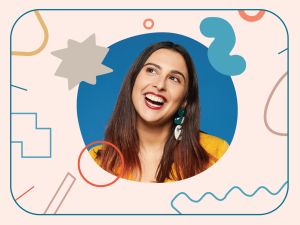
June 28, 2023
In the series finale of How’d You Get THAT Job?!, host Eleni Matheou unpacks what we’ve learned about how people thrive at work.

June 14, 2023
Nathan Friedman is the co-president and chief marketing officer of Understood.org. And he has dyslexia and ADHD. Learn how he got into the C-suite.
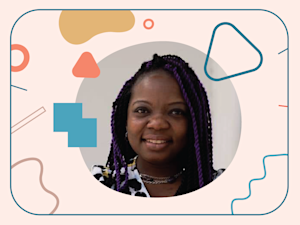
May 31, 2023
Dr. Loucresie Rupert is a child, adolescent, and adult psychiatrist with ADHD. She didn’t have an easy time getting her diagnosis as a Black woman.
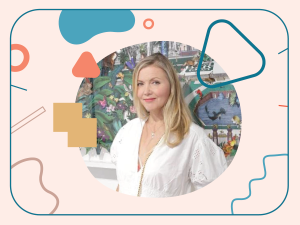
May 17, 2023
Kristjana Williams is a London-based Icelandic artist with dyslexia. She wasn’t diagnosed until she was 25, and now she has her own studio.

May 3, 2023
Aideé Chávez Frescas has ADHD, and is a senior social media manager at Understood. Her posts help end stigma and show others they’re not alone.

April 19, 2023
Alex Gilbert is a career coach with ADHD and dyslexia. After working in leadership development for years, she started her own coaching business.
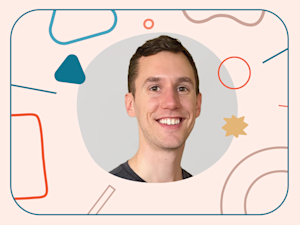
April 5, 2023
Dan Reis was diagnosed with ADHD during the pandemic. Now, he’s made it his mission to explore coping strategies to help him get his work done.
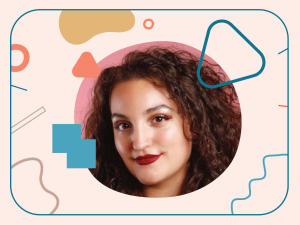
March 22, 2023
Rachel Basoco’s two jobs keep things interesting for her ADHD. She works full time at Fidelity, and part time at 11:11 Media, Paris Hilton’s company.
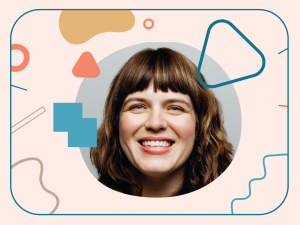
February 22, 2023
Claire Odom is a psychotherapist with ADHD. She’s also a disability inclusion consultant who has advice on navigating the workplace.

